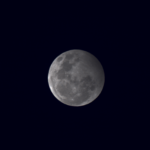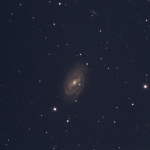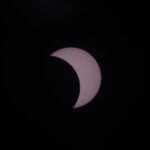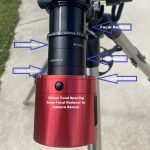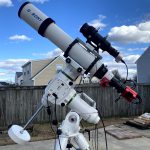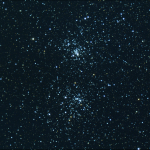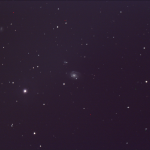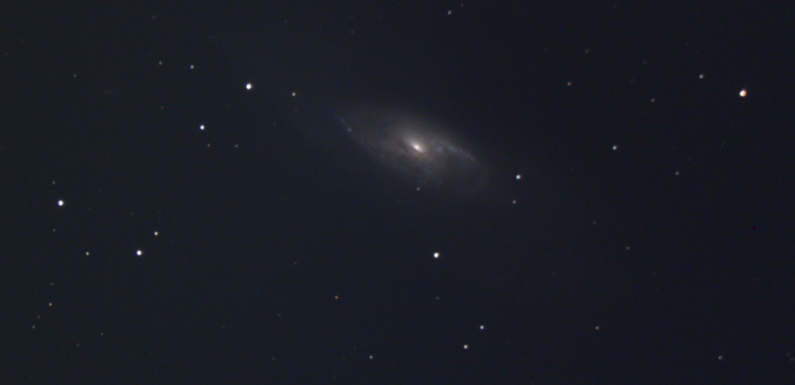
Clear night with temperatures in the low 40s. Little cool for the first day of Spring, but nice and clear. Spring welcomes in Galaxy season! Lots of faint fuzzy far off galaxies out there to enjoy. Which is one of the reasons why I mounted the C8 on the EQ6R. The 8″ Celestron SCT’s aperture and focal length (with or without the focal reducer) make EAA galaxy observing a lot of fun. With the daylight savings time change it is not getting dark till around 8 PM EDT so that makes for a short observing window on a school night. This is also the first night out with the new Libre SBC Armbian build running my INDI Server.
I had planned to fiddle with the collimation of the C8, so the first target of the night was the bright star Betelgeuse in Orion. I unfocused to get a nice donut. It is not as bad as I thought. Even though it looks like collimation is just a little off, it was not off enough for me to want to fuss with it.
After checking the collimation I refocused the C8 using the Ekos Focus Module and bahtinov mask I have for the C8. Only took a few minutes to get pretty decent focus dialed in. I tested plate solving and my calculated focal length was 1295mm or F/6.4. I did not polar align the scope tonight, the scope has not moved so just relying on the alignment from the last session.
The EAA images in this post were capture with my ZWO ASI294MC Pro cooled to -10 C through my Celestron C8 SCT with the Celestron 6.3 Focal Reducer. For guiding I am using the Orion Starshooter Autoguider (OSSAG) camera attached to my SV106 60mm guide scope. All gear is mounted on a Sky Watcher EQ6-R Pro. The mount and cameras are remotely controlled with KStars/Ekos through INDI Server running on a Libre Computer SBC. The images were live stacked using SharpCap Pro. Images have been cropped to the region of interest for file size and to remove vignetting caused by the focal reducer, but otherwise appear just as I observed them.
IC 342, the Hidden Galaxy, an intermediate spiral galaxy in the constellation of Camelopardalis. This is a guided EAA live stack of 40 x 30 second exposures at 121 gain, 30 offset, and bin 2×2.
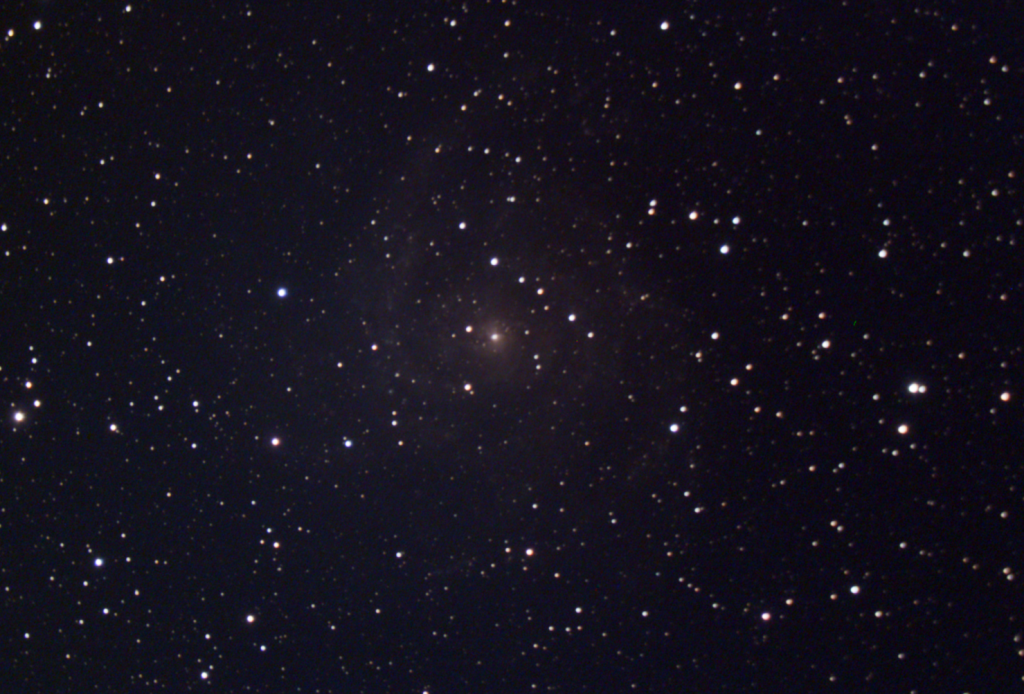
The sky had just darkened, probably would have been better to wait for it to get a bit darker, still the core came in to view really nice. IC 342 is behind dust lanes in our galactic equator which makes it appear to be much fainter than it is. Nice start to the night. I may do some post-processing on this one to see if I can get the spiral arms to pop out a bit more.
Messier 106 (M106) an intermediate spiral galaxy in the constellation Canes Venatici. This is an EAA live stack of 40 x 30 second exposures at 121 gain, 30 offset, and bin 2×2.
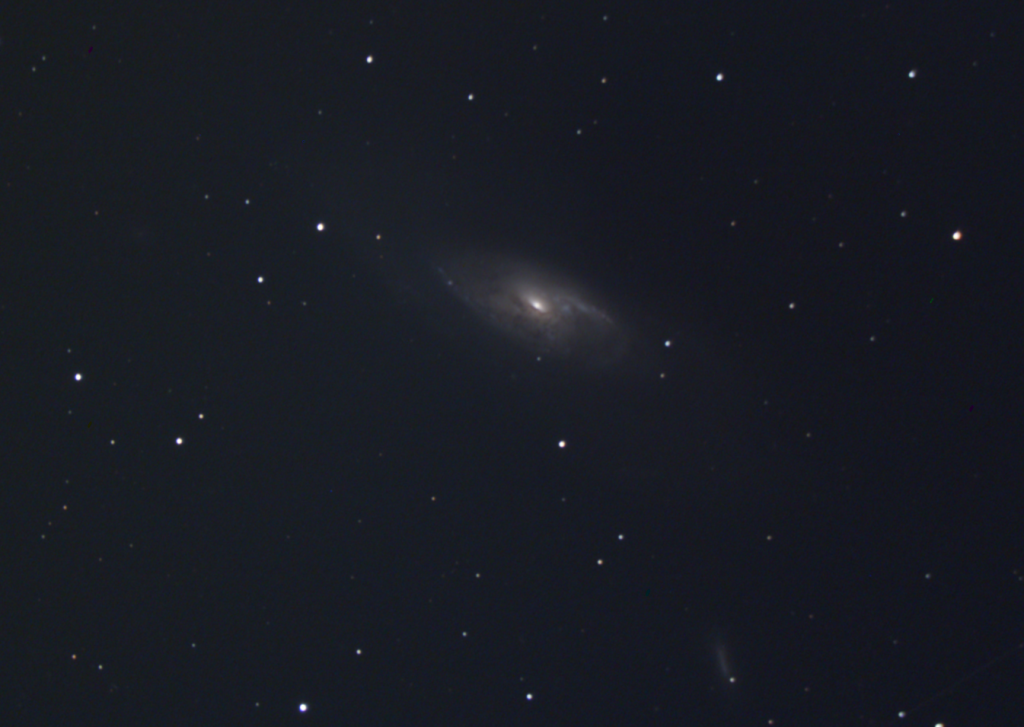
WOW! This was my favorite of the night! Interesting details in the dust lanes. With the way the core resolved I can almost feel the spiral arms swirling around and being drawn into the core. Really enjoyed watching this stack start to pop out the details. The faint galaxy in the lower right of the frame is NGC 4248. I pushed the saturation in SharpCap to about 2, which helped bring out the colors.
Messier 109 (M109) is a barred spiral galaxy in the constellation of Ursa Major. This is a guided EAA live stack of 40 x 30 second exposures at 121 gain, 30 offset, and bin 2×2.
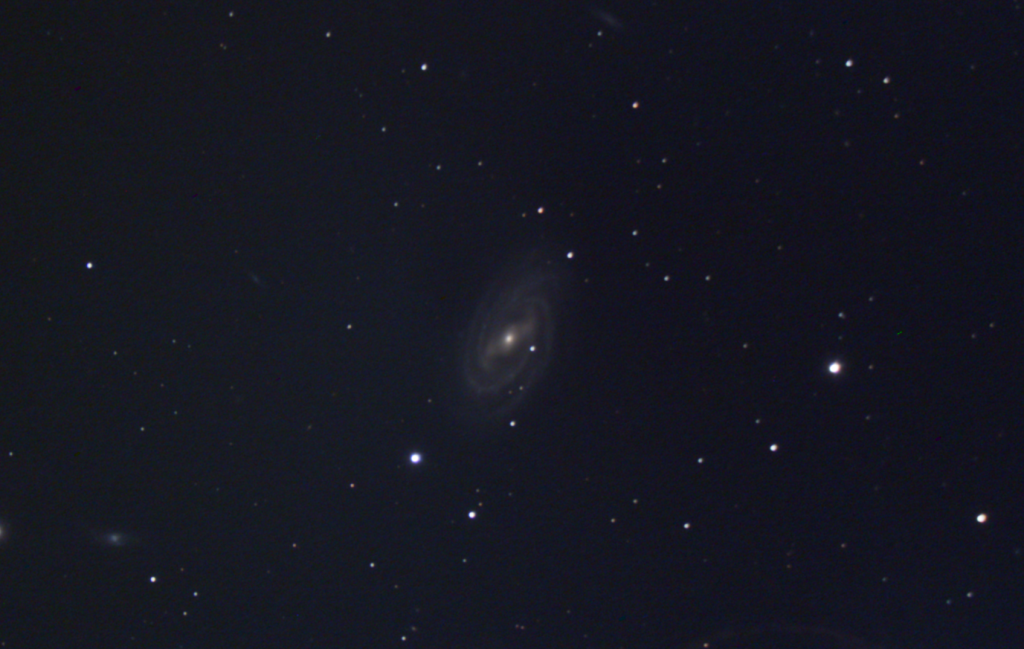
I observed M109 during the last EAA session. Since I was in the area I captured a bit more data. The center bar and inner ring is resolvable. A little noisy, but nice to observe. Lots of faint fuzzy friends also capture in the FOV.
Messier 51, the Whirlpool Galaxy, in the constellation Canes Venatici. This is a guided EAA live stack of 40 x 30 second exposures at 121 gain, 30 offset, and bin 2×2.
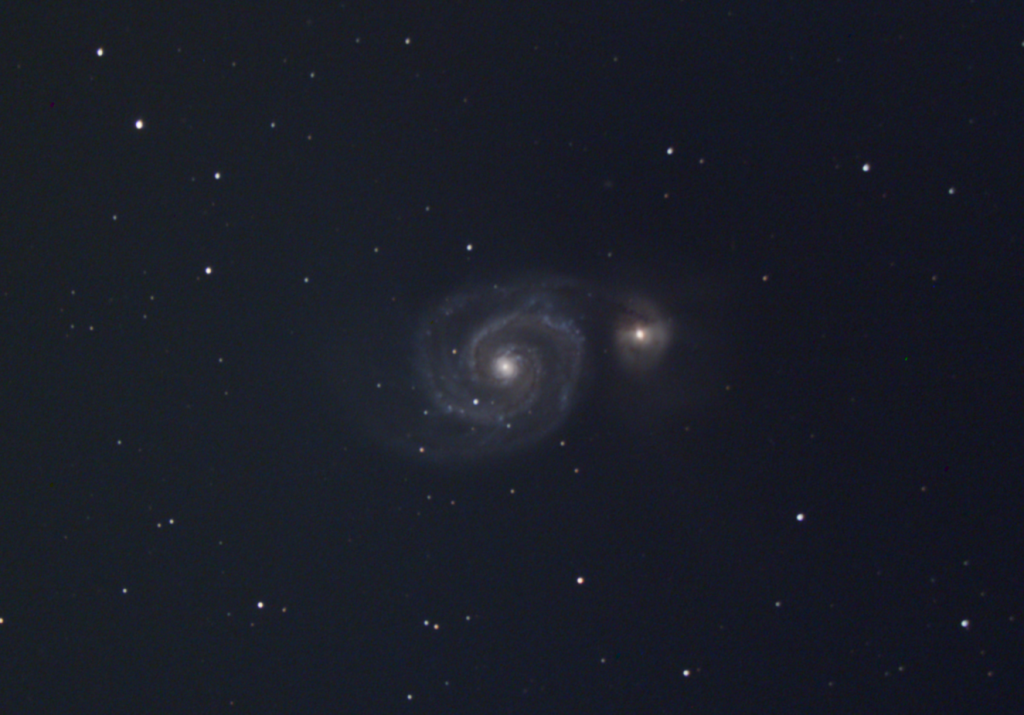
Another favorite of the night. The hints of blue in the spiral arms of the M51 and the colors in the companion galaxy’s, NGC 5195, bright core.
NGC 4631, the Whale Galaxy, a barred spiral galaxy in the constellation Canes Venatici. This is a guided EAA live stack of 40 x 30 second exposures at 121 gain, 30 offset, and bin 2×2.
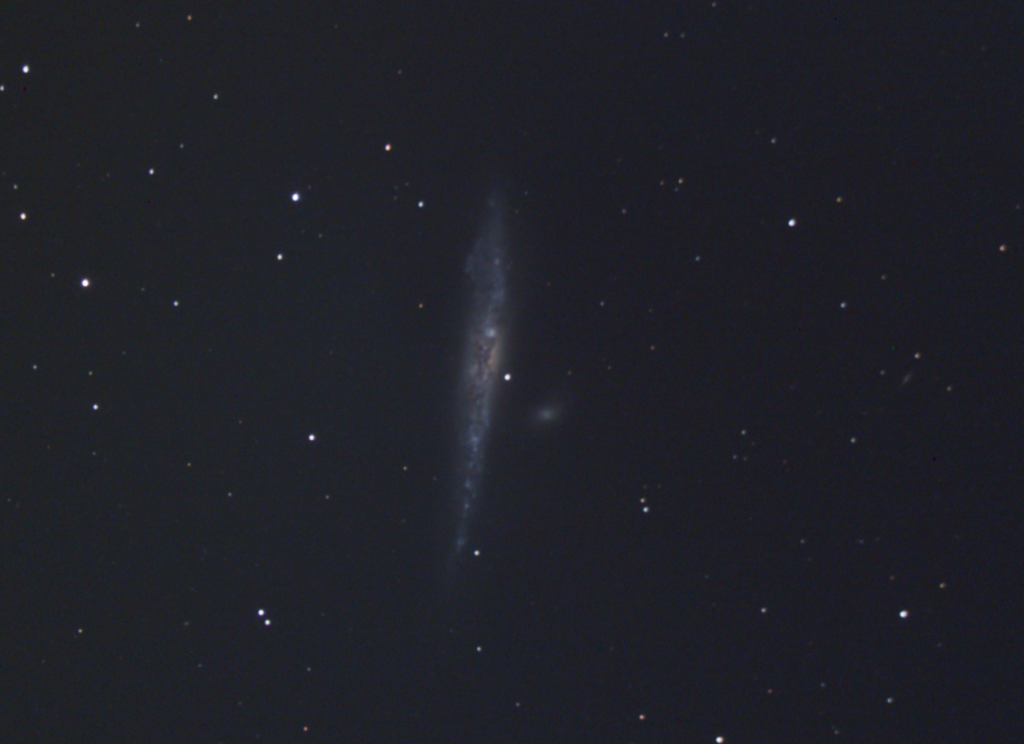
The Whale’s companion dwarf elliptical, NGC 4627, is just to the right of center. I could not remember if I had ever capture the Whale Galaxy. I had, I captured it in the C6 back in late April 2022. The capture from last night is a fair bit brighter and shows a bit more color and detail.
I had planned for NGC 4631 to be the last object of the night, but I was really enjoying the views so I decided to have a go at one more…
NGC 4565, the Needle Galaxy, an edge-on spiral galaxy in the constellation of Coma Berenices. This is a guided EAA live stack of 40 x 30 second exposures at 121 gain, 30 offset, and bin 2×2.
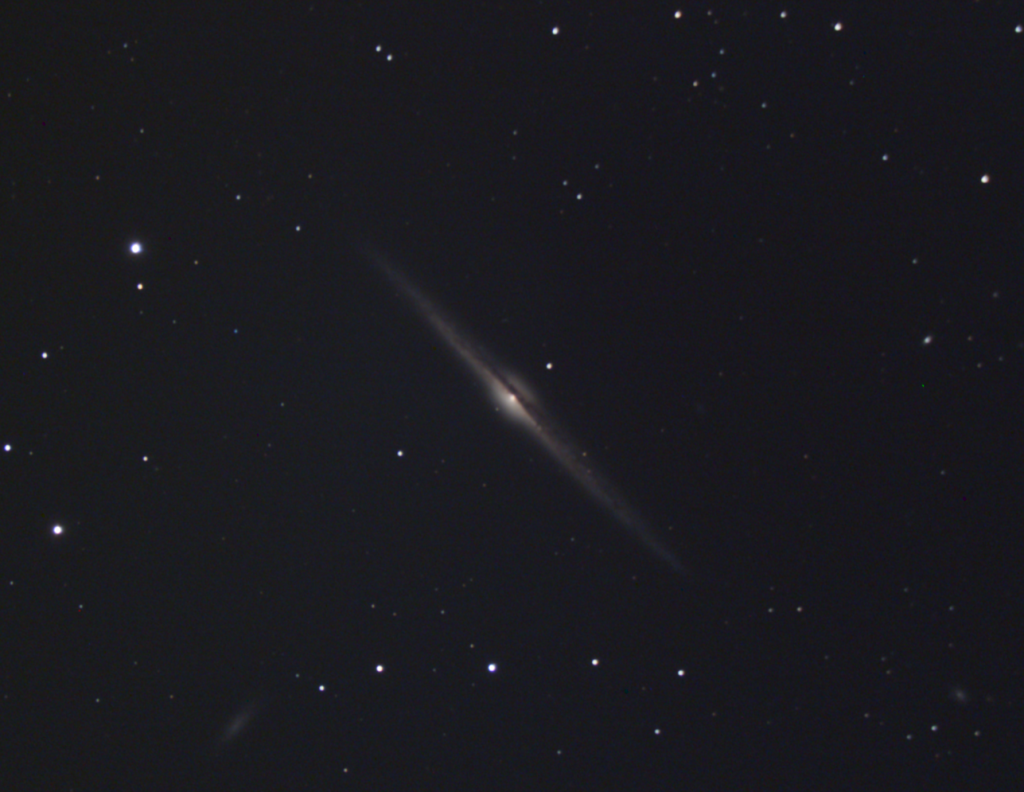
I also observed this one back in April 2022 (and a few other times). The faint barred spiral galaxy, NGC 4562, is visible in the lower left of the FOV. Another nice capture which I really enjoyed watching the details build as each 30 second exposure stacked in.
It was a GREAT night for observing galaxies!
My gear was giving me no trouble and I wish I could have observed longer, but it’s was a school night. I went out to pack up and cover the scope at around 10:45 PM EDT. The temperature had dropped to the low 30s and a thin layer of frost was starting to form on hard surfaces… so it did not feel very much like Spring.


